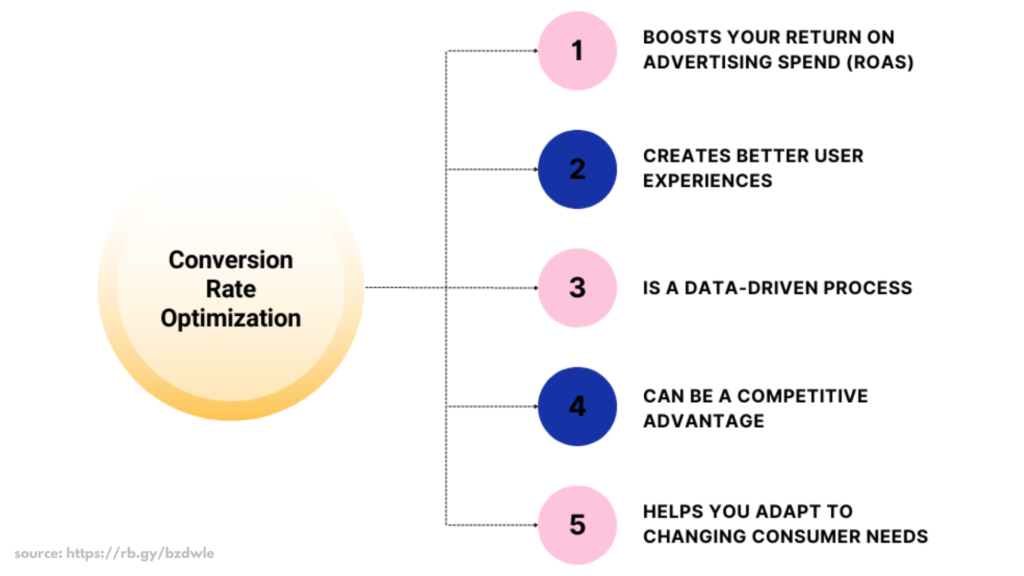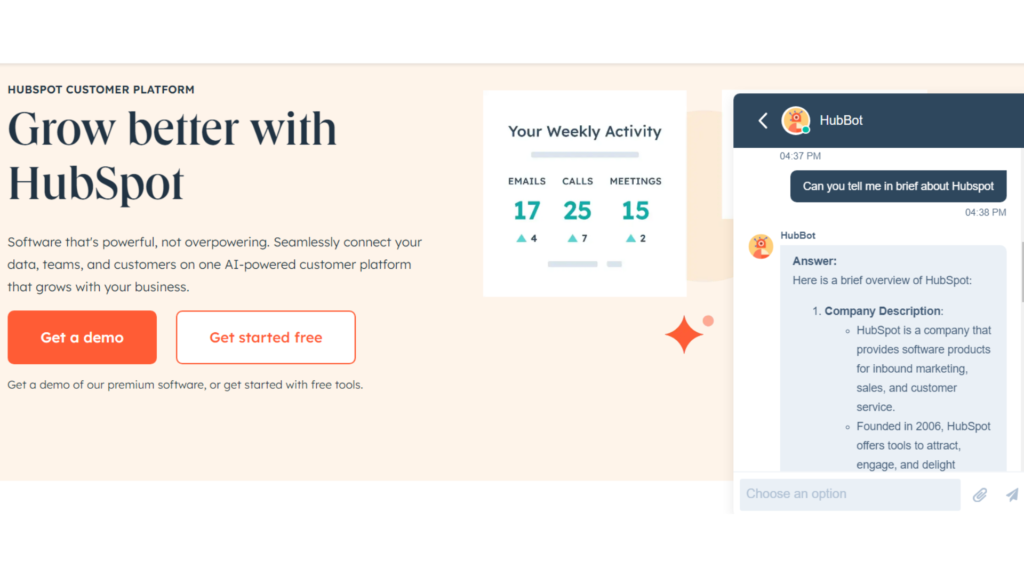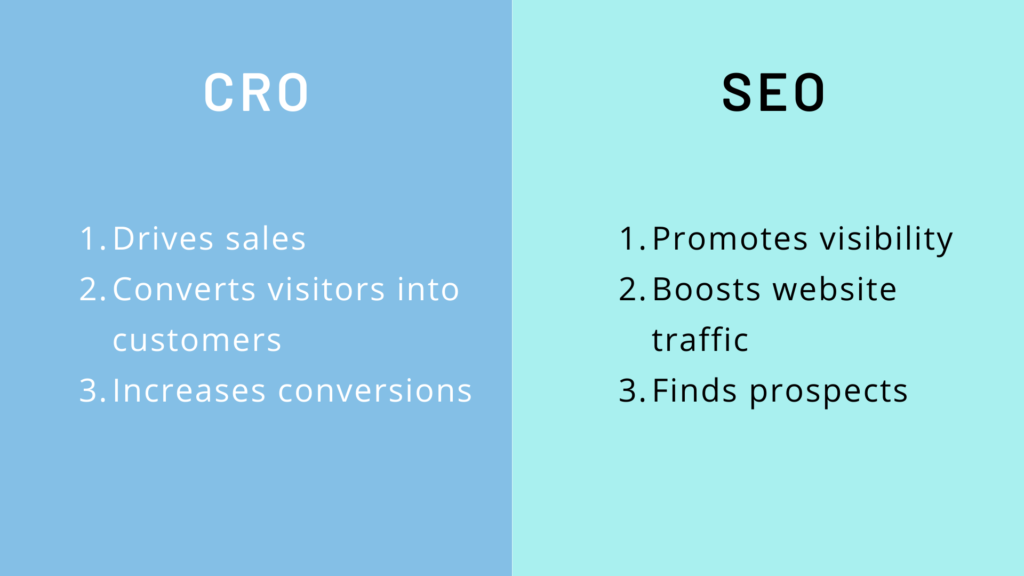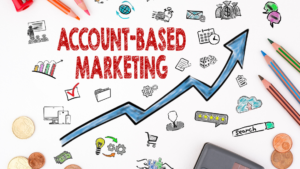Struggling to boost conversions and reduce acquisition costs? See how AI in CRO marketing can enhance personalization, optimize pricing, and predict customer behavior to maximize ROI.
Introduction: Revolutionizing Marketing with AI
In the rapidly evolving world of digital marketing, Artificial Intelligence (AI) has transformed the landscape, particularly in Conversion Rate Optimization (CRO).
Marketing teams continually seek innovative solutions to captivate audiences and generate conversions. With AI, they can increase conversion rates by up to 200%, dramatically boosting sales and engagement.
This article explores how businesses can use AI in CRO Marketing to 10x their conversions through intelligent customer journey optimization.
Understanding the Basics of Conversion Rate Optimization (CRO)

Conversion Rate Optimization (CRO) involves refining a website or app to boost the percentage of users who perform a desired action, like signing up for a newsletter or completing a purchase.
A strong AI in CRO Marketing strategy can significantly reduce customer acquisition costs, improving ROI.
For instance, a 1% increase in conversion rate could yield an additional 10-20% in revenue. By harnessing AI’s predictive power, marketers can identify and eliminate friction points, resulting in a seamless customer journey.
Role of AI in CRO Marketing
AI technologies have an extraordinary ability to analyze massive data sets in real time, identify patterns, and automate decision-making processes. This makes them perfectly suited for CRO marketing.
Here’s how AI in CRO Marketing is revolutionizing the process:
- Personalized Customer Experiences: AI leverages customer data to create highly personalized recommendations and content, improving user engagement and driving conversions. Netflix’s recommendation engine, powered by AI, curates personalized movie suggestions, resulting in 80% of watched content stemming from AI-driven recommendations.
- Predictive Analytics: Advanced algorithms predict customer behavior and deliver tailored messaging that aligns with individual preferences, leading to more effective marketing campaigns. Marketers can increase click-through rates by over 50% by tailoring messages based on predictive analytics.
- Automated A/B Testing: AI simplifies A/B testing by analyzing results faster and suggesting optimal variants, helping marketers refine their strategies quickly. Facebook utilizes AI to test multiple ad variants, helping advertisers maximize ROI.
- Dynamic Pricing Optimization: AI algorithms can optimize pricing based on demand, competition, and user behavior, helping businesses capture maximum value. E-commerce platforms like Amazon leverage AI to adjust pricing dynamically, boosting profits by up to 25%.
- Churn Prevention: AI identifies customers likely to churn and helps develop targeted retention strategies to keep them engaged. SaaS companies use AI to predict and reduce churn rates, minimizing customer attrition by 30-40%.
Enhancing Personalization with AI
Personalization in marketing isn’t a trend but a necessity. Brands that personalize their messaging witness a 20% increase in sales on average. AI personalizes:
- Content: Tailors messaging to match individual preferences and behavior, leading to higher click-through rates and conversions. AI-powered platforms like Adobe Target curate unique content for each user, leading to higher click-through and engagement rates.
- Product Recommendations: Suggests relevant products to users based on their previous interactions, increasing the likelihood of a sale. Amazon’s recommendation engine generates 35% of its total sales.
- Email Campaigns: AI dynamically adjusts email campaigns, leading to 6x higher transaction rates than standard email blasts.
Optimizing Lead Generation with Predictive Analytics
AI’s predictive analytics are vital for effective lead generation, enabling marketers to:
- Score Leads: Salesforce’s AI-driven lead scoring boosts sales by identifying and prioritizing high-value prospects.
- Segment Audiences: Marketers who use predictive segmentation increase their engagement rates by 40%.
- Forecast Trends: Businesses that forecast trends with AI improve their demand forecasting accuracy by 20-30%.
Automated A/B Testing for Smarter Strategies

A/B testing is a staple of CRO marketing, but traditional methods can be time-consuming. with AI in CRO Marketing, A/B testing allows for:
- Testing Multiple Variants: Google Ads optimizes campaigns by testing multiple versions simultaneously, reducing optimization time by 60%.
- Optimizing Faster: Adobe Experience Cloud’s AI-driven A/B testing delivers quicker insights and suggests actionable improvements in real-time.
Maximizing Value with Dynamic Pricing Optimization
Dynamic pricing, powered by AI, can:
- Analyze Demand: Continuously monitors market demand to adjust pricing strategies in real-time. Hotels using dynamic pricing increase room revenue by 15-20%.
- Monitor Competition: Keeps an eye on competitors’ prices and adjusts yours accordingly to maintain competitiveness. Online retailers track competitors’ pricing and adjust theirs, maintaining competitiveness and customer loyalty.
- Boost Profits: Identifies opportunities to offer personalized discounts that encourage sales while maintaining profitability. Airlines employing dynamic pricing increase ticket sales by 5-10% through personalized offers.
AI-Powered Chatbots: A New Level of Engagement

AI chatbots revolutionize customer engagement through:
- Enhancing Customer Support: Provide 24/7 customer assistance, reducing friction and improving user satisfaction. Sephora’s chatbot answers FAQs and provides recommendations, reducing wait times by 70%.
- Qualifying Leads: Quickly qualify leads by asking relevant questions and directing them to the right products or services. HubSpot’s AI chatbot quickly qualifies leads and directs them to the right sales teams, increasing conversion rates by 30%.
- Upsell and Cross-Sell: Suggest complementary products or services based on the customer’s needs. Chatbots guide customers toward relevant add-ons, driving 10-15% more revenue.
Retaining Customers with Churn Prevention
Customer retention is just as important as acquisition. AI helps retain customers by:
- Identifying Risk Factors: Spotify’s AI algorithms identify disengaged users and provide targeted offers, reducing churn by 20%.
- Triggering Proactive Outreach: AI triggers proactive campaigns to re-engage dormant customers with personalized offers.
- Improving Satisfaction: Insights from churn data help companies enhance products, improving overall customer satisfaction by 25%.
Measuring the Impact: AI-Based Analytics
AI-based analytics offer comprehensive insights by:
- Tracking Real-Time Data: Tools like Google Analytics help monitor user behavior, offering marketers insights in seconds.
- Understanding Attribution: Multi-touch attribution models reveal which campaigns contribute to conversions, and refining strategies.
- Generating Actionable Insights: AI provides data-driven recommendations that improve key metrics like click-through rates and average order value.
How Does CRO Differ from Search Engine Optimization (SEO)?

Conversion Rate Optimization (CRO) and Search Engine Optimization (SEO) serve distinct purposes within the digital marketing landscape:
Primary Objectives:
- CRO: Focuses on improving the rate at which website visitors convert into customers. It seeks to enhance user experience, engagement, and overall conversions through data-driven testing and adjustments.
- SEO: Aims to increase organic traffic by improving a website’s visibility and ranking on search engines. It leverages keyword optimization, technical adjustments, and content quality to draw in more visitors.
Process Focus:
- CRO: Involves testing different website elements like call-to-action buttons, layout, forms, and content to find optimal configurations that yield higher conversion rates. It relies on data analysis and iterative testing.
- SEO: Entails on-page and off-page strategies to rank higher in search results. On-page SEO optimizes keywords, metadata, and structure, while off-page focuses on backlinks and domain authority.
Metrics and KPIs:
- CRO: Primarily tracks conversion-related metrics, such as conversion rate, bounce rate, session duration, and cart abandonment. The emphasis is on turning more visitors into paying customers or leads.
- SEO: Tracks metrics such as organic traffic, search engine ranking positions, click-through rates, and domain authority to measure the effectiveness of search visibility and content strategies.
Impact on Traffic vs. Conversions:
- CRO: Works to convert existing traffic more effectively, thus making the most of the visitors already coming to the site.
- SEO: Focuses on drawing in new, qualified traffic from search engines by enhancing search visibility.
Practical Tips for Implementing AI in CRO Marketing
1. Start Small: Experiment with a single AI tool like a chatbot. Chatbots can engage customers directly, offering personalized responses and guiding them toward conversion points.
Implement one in your current marketing funnel to see how it improves customer interactions. Track engagement metrics and feedback to understand its impact on conversions before expanding to other tools.
2. Integrate Data Sources: Unified data sources give you a comprehensive view of customer behavior across all touchpoints. Ensure seamless integration between your CRM, web analytics, email marketing platform, and other data systems.
This integration provides AI algorithms with a broader, more accurate dataset for analysis, enabling them to identify trends and opportunities that would otherwise be overlooked.
3. Focus on Personalization: Personalization is key to delivering relevant content and product recommendations. Implement recommendation engines to analyze user preferences, browsing behavior, and purchase history.
These engines can offer targeted suggestions, which not only increase user satisfaction but also encourage repeat visits and higher average order values. Test personalized messaging and product displays to optimize results further.
4. Test and Refine: Testing and refinement ensure continuous improvement in your AI-driven CRO strategies. Run A/B tests on different approaches suggested by AI insights, like varying the copy, design, and product recommendations.
Analyze the results to refine your strategy continuously. Monitor your AI tools for accuracy, adapting them based on user feedback and changes in customer behavior. This iterative process maximizes conversion opportunities, ensuring sustained growth.
Conclusion: Embrace AI for Exponential Growth
AI in CRO marketing is making a huge impact by unlocking new opportunities for engagement and 10x’ing your conversions. With the power of personalized experiences, predictive analytics, dynamic pricing, and AI-based insights, your marketing efforts can reach new heights.
By integrating AI in CRO Marketing focusing on personalization, you’ll be well on your way to maximizing your ROI and creating an unbeatable marketing strategy. Embrace AI now, and witness your conversion rates soar!
To discover examples of AI-driven CRO, click here!
FAQs
1. How does AI-driven CRO differ from traditional conversion optimization methods?
AI-driven CRO utilizes advanced algorithms to analyze vast amounts of data in real time, enabling personalized customer experiences, predictive analytics, and dynamic optimizations.
Unlike traditional methods, AI offers faster insights and continuous optimization, resulting in significantly higher conversion rates and ROI.
2. What are some real-world examples of businesses leveraging AI in CRO marketing?
Companies like Netflix, Amazon, and Salesforce are pioneers in harnessing AI for CRO. Netflix’s recommendation engine personalizes content for users, while Amazon’s dynamic pricing optimizes sales.
3. How can AI-powered chatbots improve customer engagement and retention?
AI chatbots provide 24/7 customer support, qualify leads, and offer personalized recommendations, significantly enhancing user experience.
4. What practical steps can businesses take to implement AI in their CRO strategies?
Start by experimenting with a single AI tool, integrate data sources for comprehensive insights, focus on personalization to drive immediate value, and continuously test and refine strategies based on AI-generated insights.
5. How can businesses measure the impact of AI-based CRO initiatives?
AI-based analytics tools like Google Analytics offer real-time data tracking, multi-touch attribution models reveal campaign contributions, and actionable insights help improve key metrics like click-through rates and average order value.
Written by Sarah Joshi from Trigacy. The images have copyrights from their respective sources.




